Renewable ocean energy is quickly developing as a potential replacement for harmful fossil fuels, with the European Commission predicting that marine renewable energy may become the main source of energy in the EU by 2050. Senior Business Intelligence Consultant Eva Razzouk summarizes the key findings from Questel's recent analysis of patent dynamics in this fast-evolving form of clean energy.
Global warming is no longer a hypothesis with the earth now experiencing undeniable climate change. Our planet is already about 1.1°C warmer than it was in the late 1800s, according to the United Nations, with NASA recording July 2023 as the hottest month on record since 1800.
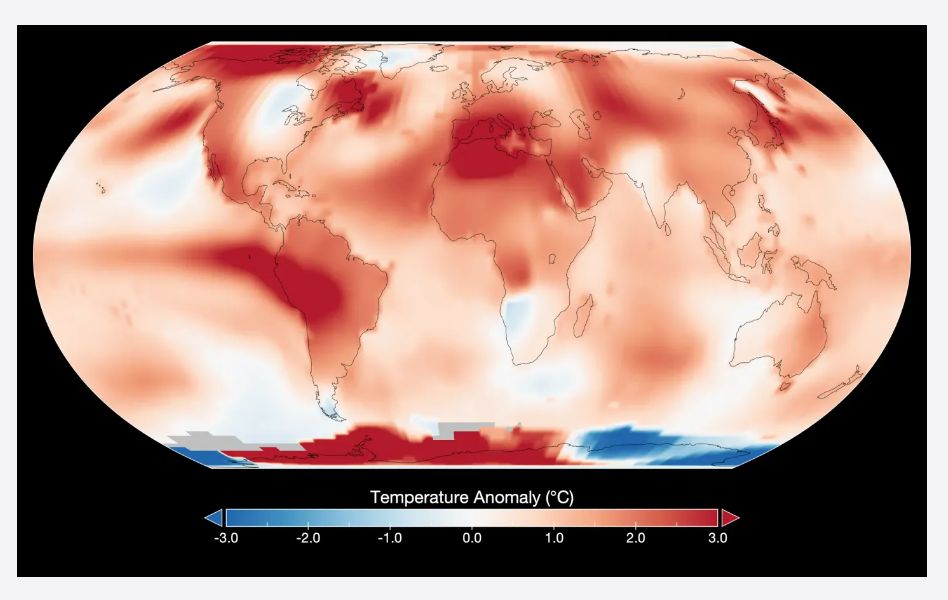
Greenhouse gas (GHG) emissions are considered one of the major culprits of global temperature increase and alteration of planet-liveable climate conditions. As emissions continue to rise, efforts are taking place worldwide to enable a transition to a net-zero world (by cutting GHG emissions to net zero)—one of the greatest challenges mankind has faced. With countries joining forces to build resilience to climate change, alternative energy sources are being considered a key solution to end global warming.
Of the potential alternative energy solutions being explored, marine renewable energy—also known as renewable ocean energy—is developing fast. According to the European Commission, it may become the main source of energy in the EU by 2050.
Types of Renewable Ocean Energy
Marine energy encompasses all solutions for generating energy from the movements of the oceans or the seas. Harnessing electricity power is implemented through different types of ocean energy resources contained in: ocean waves, tidal levels' difference between high and low tides, tidal currents movement, thermal gradients, and salinity gradients' change, leading thus to five different types of marine renewable energy:
- Wave power: captures the movement of ocean and sea waves and uses it to create energy.
- Tidal range energy: powered by level differential between the tides through a barrage or other forms of construction across an estuary.
- Tidal currents energy: generated by the energy of tidal currents using marine turbines.
- Thermal energy: uses the difference in temperature between the sea's surface and deep water.
- Osmotic energy: extracted from difference in the salt concentration between two types of waters.
IP Patent Dynamics
Analysis using our proprietary intellectual property IP intelligence software and IP consulting services expertise revealed the following trends in innovation in renewable ocean energy.
Patent filing trends
Different filing trends were noticed between Chinese and non-Chinese players. Despite the worldwide emphasis on adopting green energy solutions, non-Chinese research and development (R&D) activities in marine renewable energies seemed to follow a declining curve in the last decade. Nevertheless, Chinese (non-extended) patent filings are reversing this trend with a continuous increase and an accentuated growth divergence from the rest of the world, mainly starting in 2016.
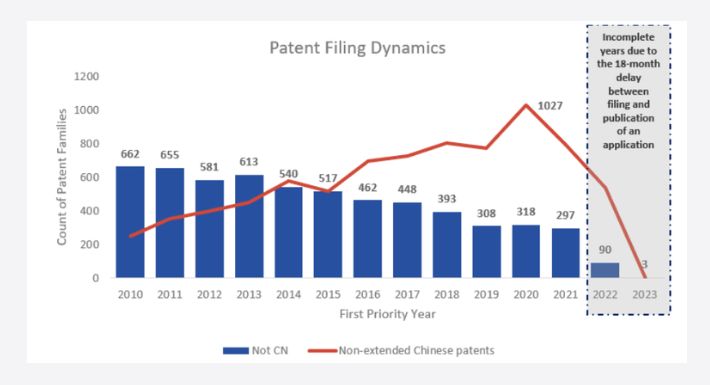
Focusing on worldwide trends excluding non-extended Chinese patents, we extracted the following interesting data.
Geographical hotspots for innovation
Among the top R&D countries, South Korea holds the first place in terms of patent filings (17%), followed by the USA (11.7%) and Japan (11.2%).
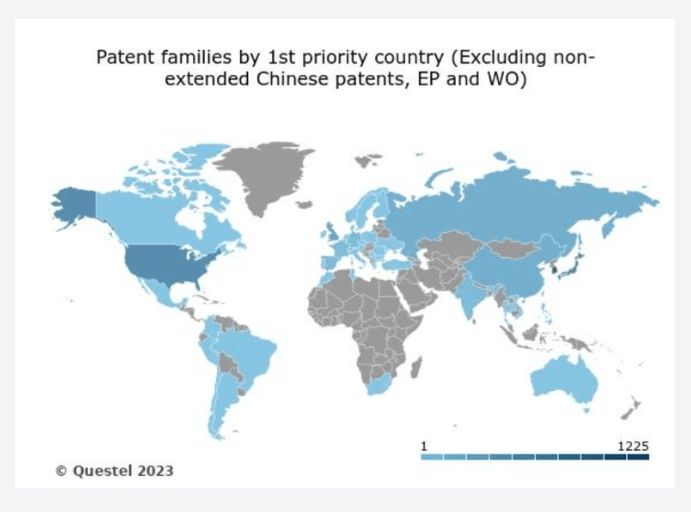
The declining investment curve is observed for almost all countries when examining the yearly filing trends. Besides China, India is the other country seemingly increasing investment in this field, while Russia looks to be keeping a steady pace.
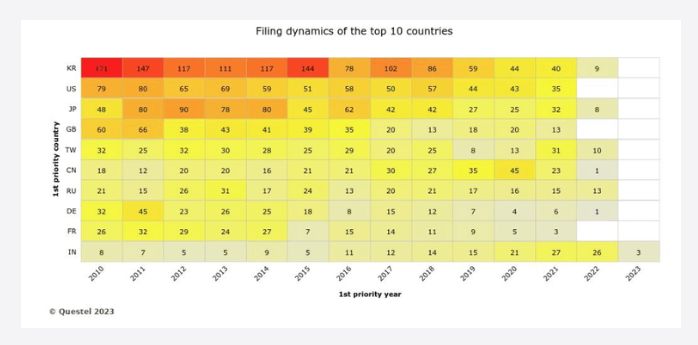
Specific technology trends
Having a closer look at the yearly filing dynamics of the different marine renewable energy technologies, wave power and tidal currents are identifiable as the most important in terms of innovation investment, with 42% and 37% respectively of the total number of identified patent families.
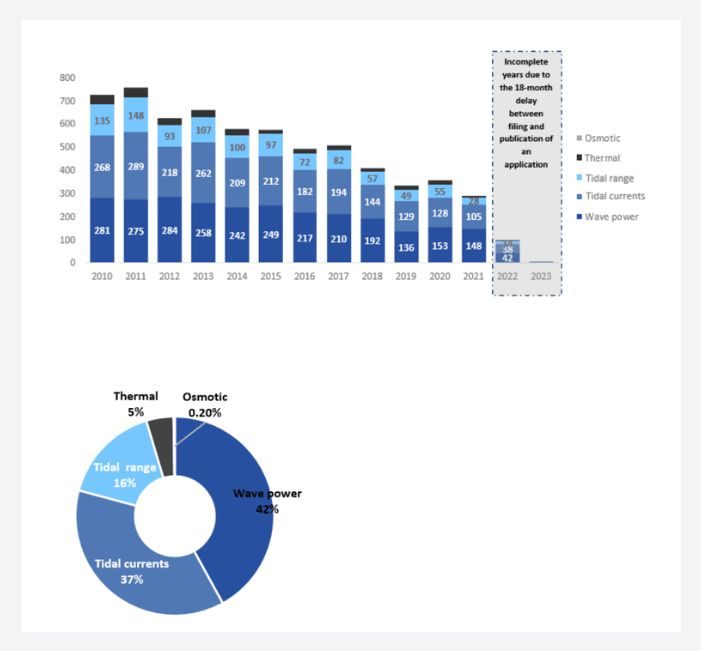
Top actors
Among the top 30 players in the field, South Korean organizations are in first place in terms of IP portfolio size, with the Korea Institute of Ocean Science & Technology and Samsung Heavy Industries at the top of the list. Of the top five, Japanese companies IHI and Mitsubishi Heavy Industries are in third and fifth, while the German company Robert Bosch lies in fourth. Despite its position in the top five players, however, most Robert Bosch patent families are not in force.
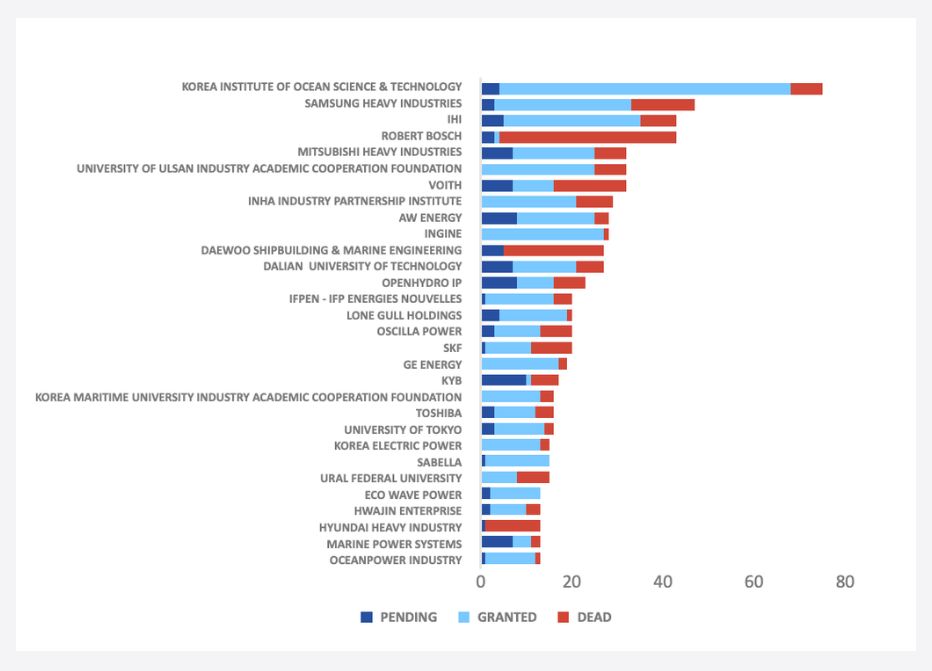
Looking more closely at the top players' filing dynamics, the drop/absence of Robert Bosch filing activities in recent years aligns with the observation made above and may be an indication of a decline of interest of the company in the field.
Despite there being a trend of general decline, there are some newcomers to innovation in marine renewable energy, such as the American player Long Gull Holdings. Similarly, filing activities have increased for others, such as the Swedish company Eco Wave Power and the British entity Marine Power Systems, which aligns with the European Commission's strategy.
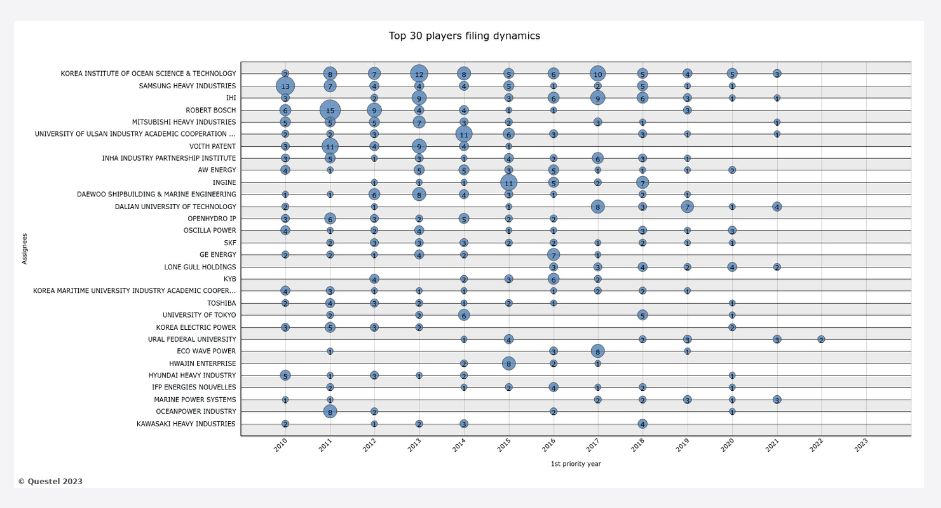
The technology focus of top players
The five different renewable ocean energy technologies are correlated for certain inventions where patent families cover more than one type. The highest number of interdependent technologies is observed between tidal range and tidal currents energies, with both concepts found in 1,034 patent families.
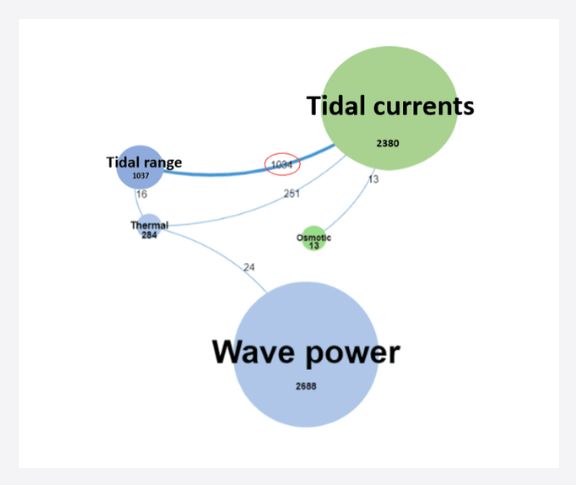
Digging further to define the specific technology of interest for top players, it can be noted that innovation activities are not restricted to one specific type but rather to multiple ones simultaneously and more specifically to wave, tidal currents, tidal range, and thermal energies
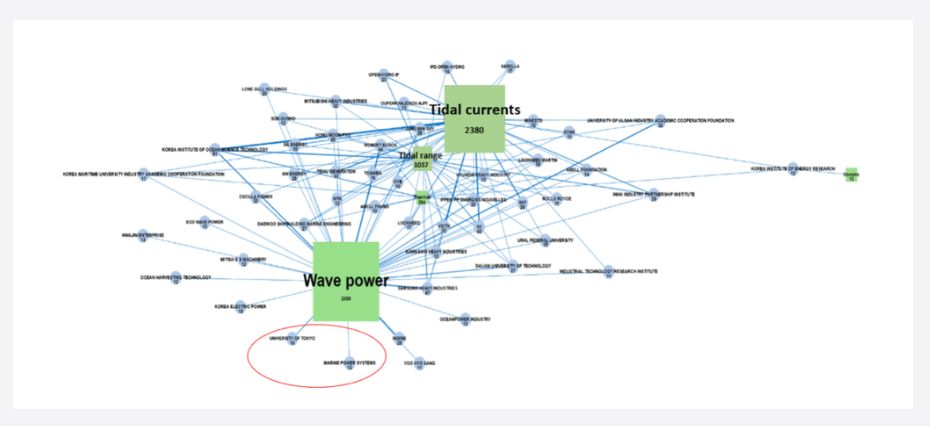
Nevertheless, some players—such as the University of Tokyo and Ocean Power Industry—are restricting their R&D activities to wave power while, according to detected patenting activities, osmotic energy is being tackled by a single player: the Korea Institute of Energy Research.
Main concepts and applications
The phylogenetic tree represented in the graph below displays the major concepts covered by the patent families that are the subject of this study.
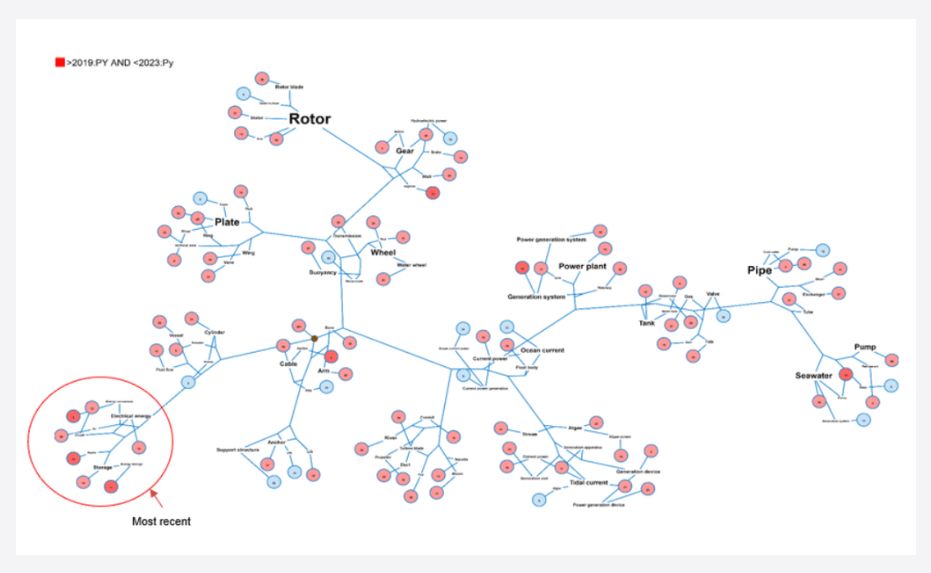
The main concepts, with the highest occurrence in the documents, vary in colour, depending on the number of patent families found containing this concept. The more intense the red colour, the greater the number of corresponding documents.
Limiting the display to inventions with priority dates starting from 2019, 'storage' appears to be the concept attracting the most attention in the latest R&D activities related to marine renewable energy technologies.
Patent dynamics can provide valuable insights into research and innovation trends and markets, as we hope this analysis on renewable ocean energy technology illustrates. For further detail on patent activity in the energy sector or for specific advice or support, contact the Questel IP Consulting team. For future insights, follow our publications and webinars in our Resource Hub and dedicated Webinars & Eventspage.
The content of this article is intended to provide a general guide to the subject matter. Specialist advice should be sought about your specific circumstances.
